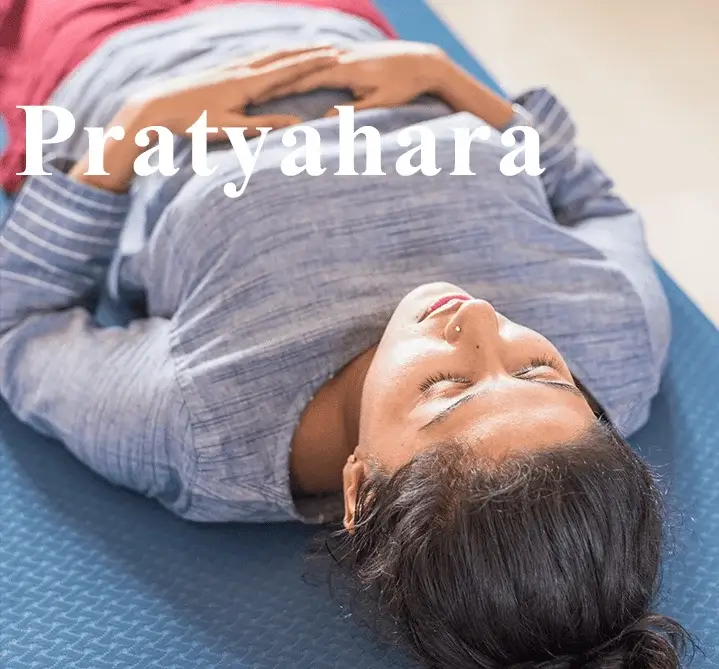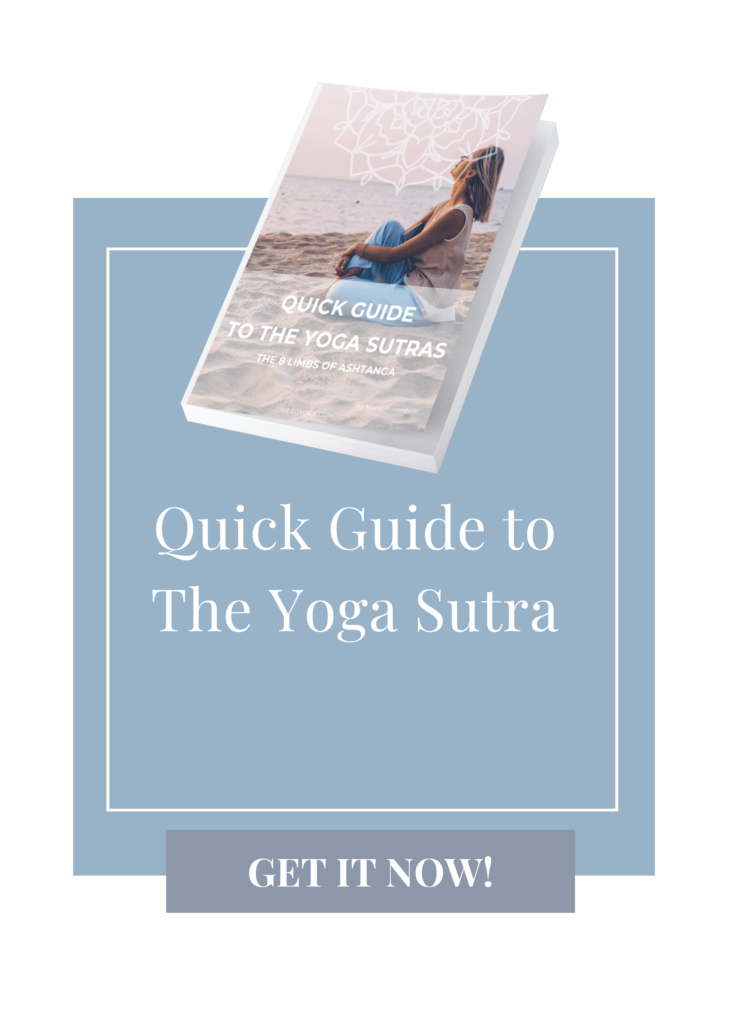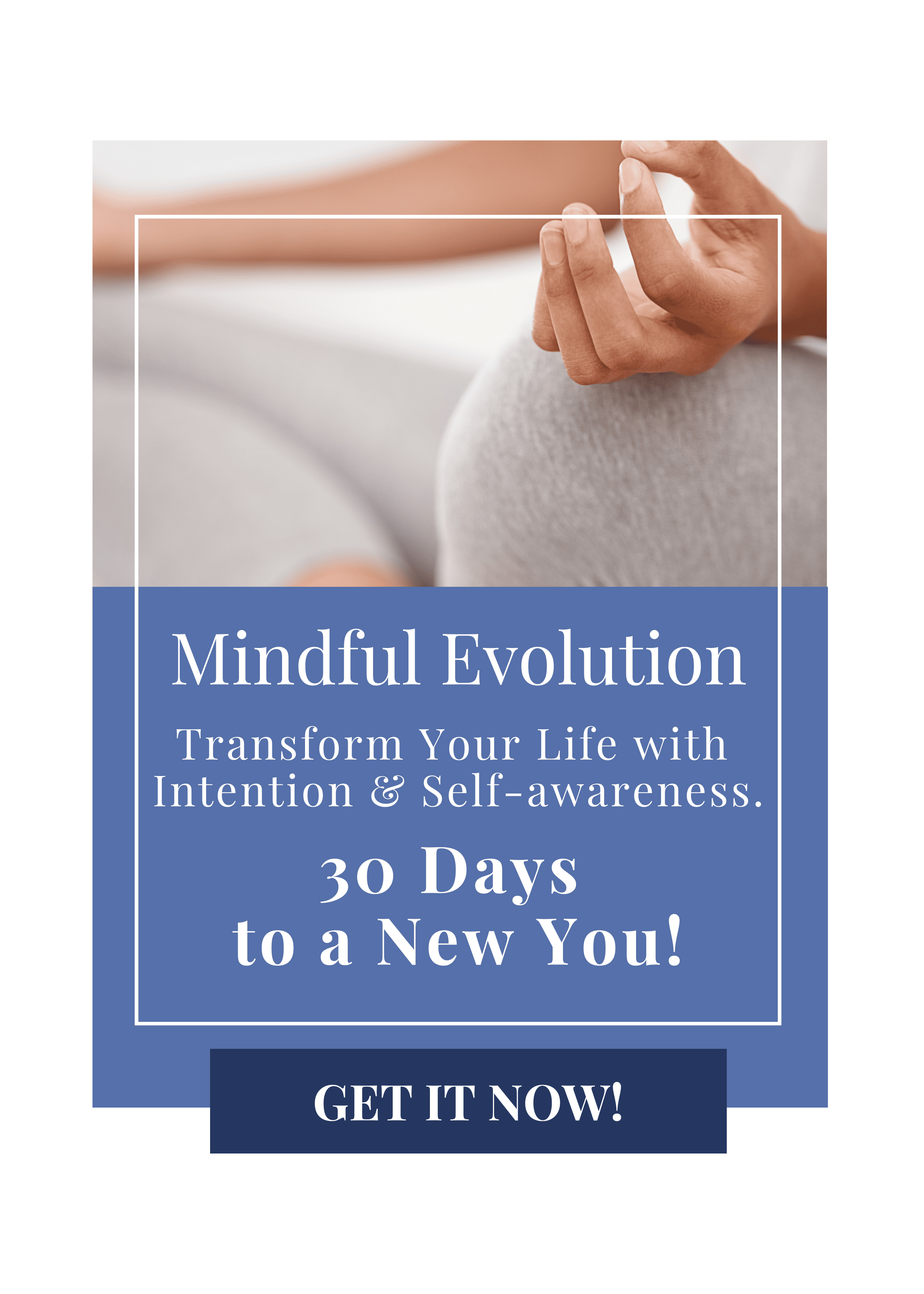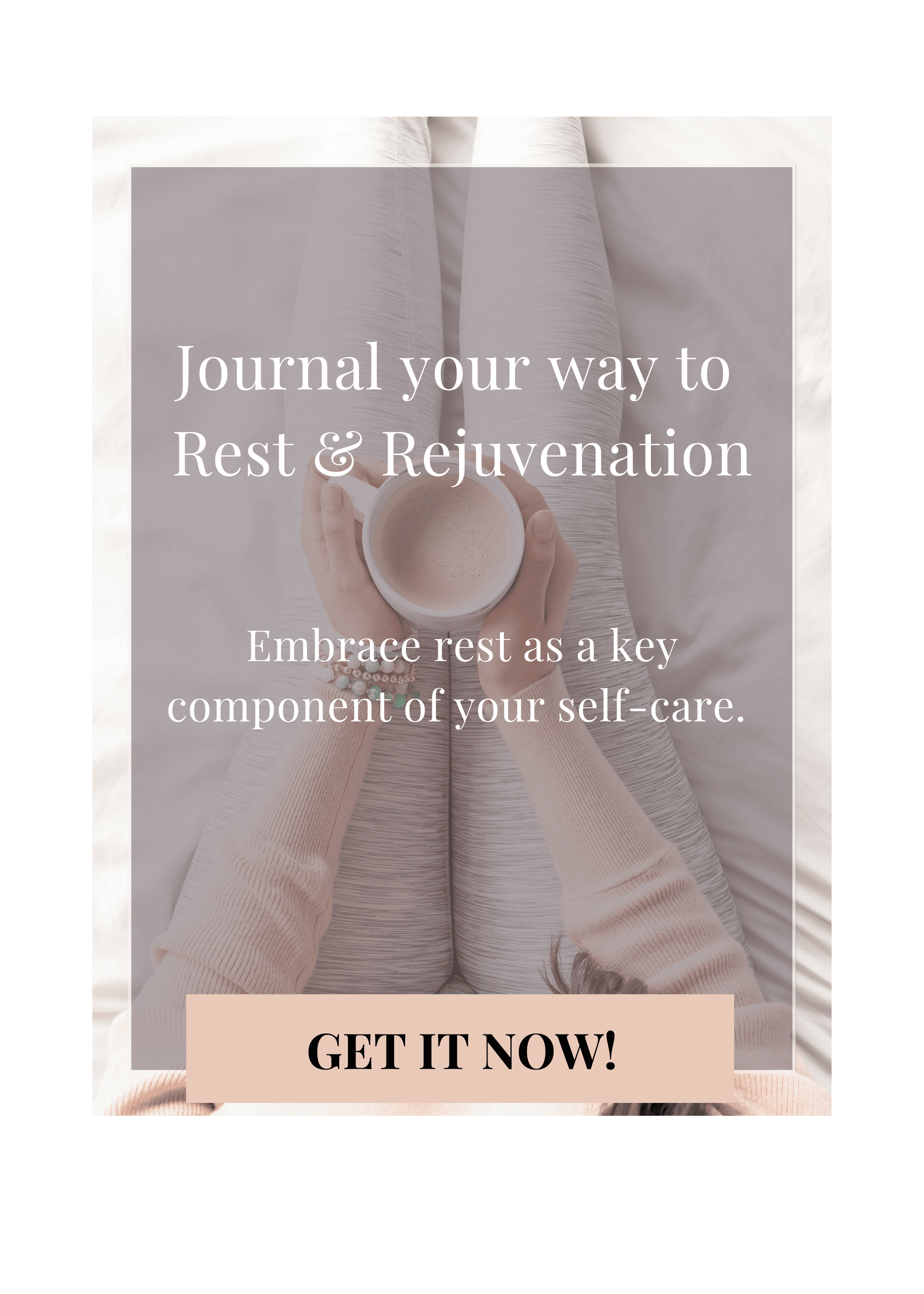This article includes a short introduction to the principles of Pratyahara + journal prompts + practical and easy ways to incorporate the concept into your life.
NOTE If you just landed on this article please read the first article in this series first:
“What can an ancient text called the Yoga Sutra do for you?”
PRATYAHARA – Sense mastery.
(Yoga Sutra II.54)
Pratyahara means “withdrawal of the senses”. The word “pratyahara” comes from Sanskrit prati and ahara. Prati means “towards or away,” and ahara is the “food” or “external stimuli” you get from outside.
Pratyahara is the intermediate link where you pass from the first limbs that deal with the larger areas of life (behavior, the body, and the breath) and into the more subtle parts (the mind, and the practice of focus).
Having now focused on your ethical standards (yama), your self-discipline (niyama), your physical yoga practice (asana), and the control of your breath (pranayama). The fifth limb Pratyahara, can be seen as the bridge between external and internal yoga. This is where you get to deal with the mind and your unconscious being, this is where it all comes together.
In Pratyahara you try to withdraw your attention from outside stimuli and draw your attention inward – and this is easier said than done.
You receive a constant stream of information through your five senses all the time. It goes without saying that in today’s digital age, the flow of stimuli can be overwhelming, and it becomes harder and harder to take even a moment of sensory rest.
You will often react instantly and unconsciously to the information your senses feed you and are pulled away from your inner peace and into the constantly fluctuating external world. Your senses can easily take over, and you’ll end up running from one impulsive reaction to another, constantly in activation mode, and rushing through life.
Your senses are essential to daily life, but you can cultivate more inner peace by practicing Pratyahara, and anything that takes your focus away from external input can essentially be considered Pratyahara.
Pratyahara also helps to train your ability to listen to your own body. By focusing on your breath, and turning your attention inward, you learn, through practice, to tune into a place within you that exists independently of your senses. Sometimes this is easy, and sometimes it’s hard. But it is a very important part of the eight limbs practice of yoga.

How to practice Pratyahara.
The practice of yoga and any kind of physical exercise.
- Begin your practice by setting an intention to cultivate inner awareness.
- Designate a quiet, uncluttered space for your practice, free from external distractions.
- Practice certain asanas with your eyes closed to minimize visual distractions and encourage deeper introspection.
- Throughout your practice, maintain awareness of your breath, using it as an anchor to keep your mind centered.
- Block out everything that is happening around you by ignoring the sensory input you get and focusing on what is happening inside the body.
- Be fully present on your mat. Pay attention to your senses and observe your reactions to them.
- Try to actively focus on one sense during your practice, either what you see, feel, smell, or hear.
- Practice slower, more mindful movements, allowing yourself to fully experience each posture.
- Rather than relying solely on external alignment cues, explore internal sensations and cues to guide your practice.
Applying the principles of Pratyahara to your life.
- Commit to regular periods where you disconnect from electronic devices, social media, and the internet. This can help reduce sensory overload.
- Practice eating with full awareness of the taste, texture, and smell of your food.
- Be mindful of the quantity and quality of information you consume, whether it’s news, social media, or entertainment.
- Spend time in nature, focusing on the experience of your surroundings through all five senses.
- Regularly schedule time for silence and solitude. Even a few minutes a day can provide a valuable break.
- Engage in practices that require focused attention, such as knitting, painting, or playing a musical instrument.
- When engaging in conversations, practice listening with full attention, without planning your response while the other person is speaking.
- Incorporate yoga and meditation into your daily routine.
- Regular journaling can help you become more aware of your sensory experiences and their impact on your mind and body.

Important self-investigation.
Your mind can only receive a certain amount of sensory input at a time, and your energy follows the mind’s focus. You can use this in Pratyahara. When you lead the mind inward, away from external stimuli, you can more easily control your attention.
Practicing Pratyahara you can start by focusing on one sense at a time. The next time you lie in Savasana pose, choose to focus only on your hearing. Allow your mind to focus on all the different sounds around you, focusing first on the sounds far away, then on the sounds around you, and finally on the sounds inside of you. Try not to judge, evaluate, or feel the sounds, just listen. As the mind gets used to the sounds, it will slowly shift its focus inward.
Withdrawing from the senses also means detoxing the sense inputs you receive during the day. You can start by withdrawing from the things that work against you, such as unhealthy foods and toxic people. The mind cannot be healthy and strong if you are surrounded by unhealthy things, and this also includes the media you choose to focus on and spend time on.
Try looking at what kind of impressions you are feeding yourself through television or social media? Is it inspiring or is it junk food for the mind? To distance yourself from this sensory overload, try spending some time without any media inputs. Even if it’s just a few hours every other day, turn off your cell phone, TV, and laptop and turn your focus to your surroundings and inward.
During meditation, you can focus on your breathing, following each inhale and exhale. Now applying Pratyahara try to notice the actual sensation of the breath inside you. How the inhale feels going inside your body, how it moves inside you, and how the flow and emptiness of the exhale feel.
Contemplation and Journal prompts on the principles of Pratyahara.
- Which of the five senses do you feel you utilize the most? Why do you think that is?
- Today, which of the five senses were you most drawn to? How did engaging with this sense affect your mood and energy levels?
- Describe your experience of eating a meal mindfully, focusing solely on the flavors, textures, and sensations. How did this affect your enjoyment of the meal?
- What external distractions do you find most challenging to ignore or disconnect from in your daily life? Why do you think these specific distractions have a strong pull on your attention?
- How do you feel when experiencing silence? How does not doing anything affect you?
- Practicing sense withdrawal, have you experienced any boost in creative ideas or problem-solving ability after? How can you utilize this knowledge?
- Are there any boundaries you might need to set to protect your sensory health and reduce overload? How can you implement these boundaries in a way that supports your well-being?
- What specific aspects of Pratyahara do you find most beneficial for your mental, emotional, and physical health?
- How can you use the concept of Pratyahara in meditation? Are there any other areas in your life where you can use it?
Ready to take the next step – Dhrana!






